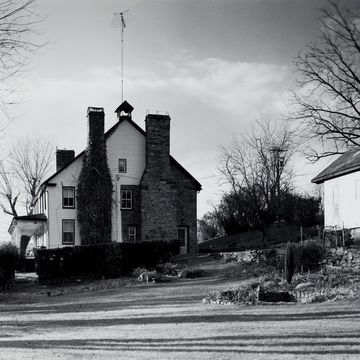George Washington slept here several times, as did many others. Likely the earliest tavern remaining in the state, and one of West Virginia's earliest buildings to boot, this large two-story house began as a one-and-one-half-story dwelling constructed of rounded oak logs. Some fifteen years later, an addition of rounded pine logs was built ten feet to the west as a separate structure. With their originally open breezeway, the two formed a dogtrot house. All the log portions were later covered with frame siding. A sandstone rear addition was built c. 1813, extending across the entire length of the tavern. At that time, the roof was heightened
Located on the Warm Springs Road midway between Martinsburg and Warm Springs (Berkeley Springs), the tavern was also known as Halfway House. George Washington first lodged here as a teenager while surveying for Lord Fairfax and visited later with his family on several trips to Warm Springs. On one occasion, he recorded that dinner cost seven shillings and sixpence, and his lodgings cost eleven shillings. The tavern operated until 1847, its demise probably due to the refusal of teetotaler Joseph Snodgrass, the last in a long line of innkeepers, to sell liquor to his guests.

